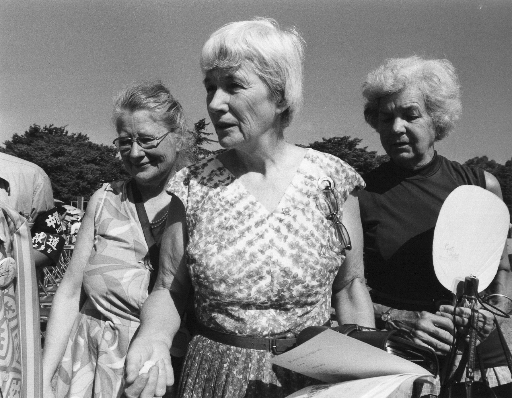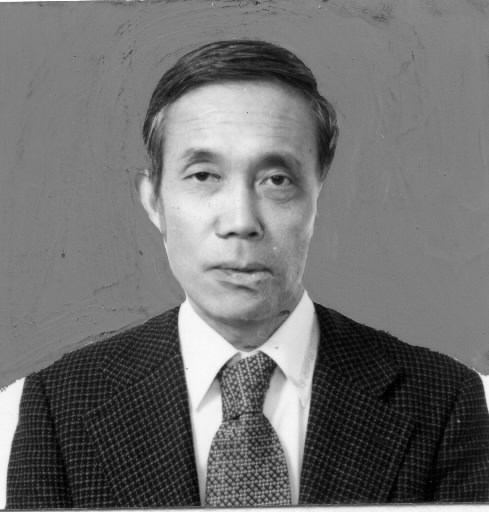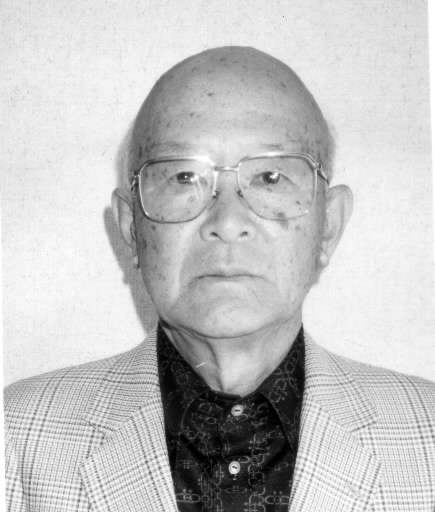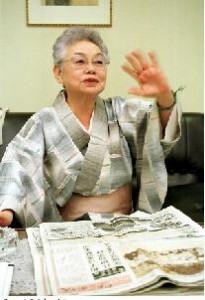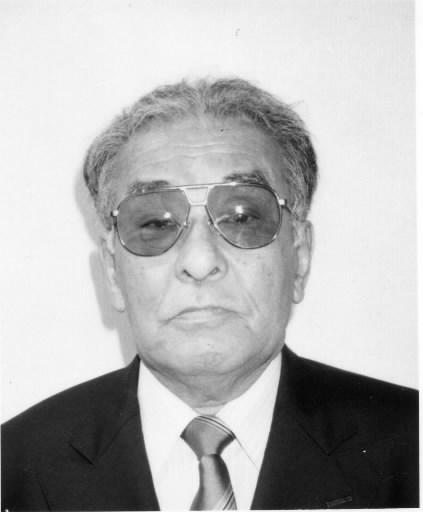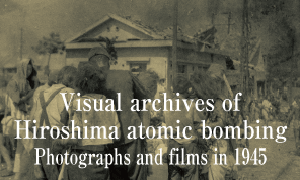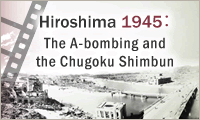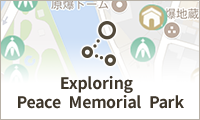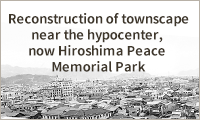History of Hiroshima: 1945-1995 (Part 21, Article 2)
Mar. 12, 2013
NGO activities and the legacy of Barbara Reynolds
by Yoshifumi Fukushima, Staff Writer
Note: This article was originally published in 1995.
If something like “the heat of the times” exists, the early 1980s was an era when a hot whirlwind blew across the globe. This whirlwind took the form of the grassroots anti-nuclear movement. First sparked in Europe by the deployment of nuclear weapons there, the grassroots movement swept over Japan as well. Citizens from all walks of life, not simply political hands and activists campaigning against atomic and hydrogen bombs, signed petitions and made appeals in succession. The early 1980s even became known as a peak period of the citizens’ movement, following another such time that arose in the wake of the Bikini Incident, in which Japanese fishing boats suffered exposure to radioactive fallout from a U.S. hydrogen bomb test. The anti-nuclear actions that took place surrounding the U.N. Special Session on Disarmament in 1982 were the pinnacle of this movement.
However, the energy of the movement soon flagged and the “myth” that the United Nations could bring about peace in the world on its own also collapsed. If a lesson can be gleaned from this time, when the weak foundation of the citizens’ movement was exposed, it would be the need to explore and expand the anti-nuclear movement based on people’s daily lives.
Meanwhile, non-governmental organizations (NGOs), pursuing their work with no official backing, have spoken out about Hiroshima and appealed to the world for peace through a range of activities. At the same time, they have had difficulty maintaining their operations due to the fact that they are private, underfunded organizations. Another obstacle has been raising awareness of peace issues within a complacent society. To break through this complacency, many flames continue to burn in the A-bombed city. The real “heat” of these times will not be stoked anywhere else but in a steady, enduring movement that focuses on the A-bombed city of Hiroshima.
Barbara Reynolds devotes her life to building peace
White hair, chiseled features, and warm smiles all belonged to the late Barbara Reynolds. Her appearance would cause others to express surprise, saying, “She doesn’t look at all like a ‘fighter for peace.’” An American peace activist who was made an Honorary Citizen of Hiroshima, Ms. Reynolds veiled her resolve to promote peace in a gentle manner. A photo of her smiling quietly hangs at the World Friendship Center, the organization in Hiroshima that she established.
“I’m not the only one who felt her passion and was impelled to take action for peace,” recalled Hiromu Morishita, 64, a professor at Hiroshima Bunkyo Women’s University and chairman of the World Friendship Center.
The World Friendship Center is located along a streetcar line in Minami Ward, Hiroshima. The frontage of the entrance to the building is so narrow that it would be overlooked if not for the sign. Inside, the entrance features a map of the world on the wall, dotted with red pins. These red pins represent the network of people who have come to the World Friendship Center, learned about the A-bombed city of Hiroshima, and have returned to their countries to share their experience.
On August 7, 1965, 20 years after the atomic bombing, about 80 people, including peace activists from abroad, gathered in Shukkeien Garden, a spot of scenic beauty in Hiroshima. At the center of this group was the white-haired Ms. Reynolds. They were there to found the World Friendship Center.
Right after the meeting, Ms. Reynolds visited Tomin Harada, 83, a surgeon. She told him that she was establishing a peace organization and that she would take up the post of director. She then asked Dr. Harada to serve as the chairman. Ms. Reynolds hoped that the center would be a “window” to the world that, regardless of politics and religion, could help those abroad learn about the experience of the A-bombed city and aid A-bomb survivors in conveying their appeals internationally. Though it was a sudden request, Dr. Harada sympathized with Ms. Reynolds’s passion for the city of Hiroshima and agreed to become the first chair of the organization.
Two private houses surrounded by leek fields in the Minamikanon district became their first base. A small board, on which the words “World Friendship Center” were written vertically in Japanese characters, hung at the entrance. The start of a grandly-named effort began with this modest sign.
Dr. Harada looks back fondly on Ms. Reynolds: “When she first came to Hiroshima, she was an ordinary housewife.” The awareness of that housewife, though, soon grew. With her husband, who was working for the Atomic Bomb Casualty Commission, and others, Ms. Reynolds made a voyage by yacht that took her around the world. At the many places the boat docked, she was asked questions about the A-bombed city. However, she felt she knew too little about it, compared to the great interest people were expressing in the atomic bombing. At the same time, she began to have suspicions concerning the nuclear tests that her own nation continued to pursue.
After her return to Hiroshima, Ms. Reynolds faced the atomic bombing squarely. Around 1960, she also began commuting to Dr. Harada’s hospital to engage in research on A-bomb diseases and related symptoms.
Ms. Reynolds was profoundly moved as she communicated with A-bomb survivors. As a citizen of the nation that had dropped the atomic bombs, she had felt timid. But the survivors put aside their bitterness and asked her to join hands with them in promoting peace. The “heart of forgiveness” she encountered in these survivors was the starting point from which Ms. Reynolds poured her boundless love into the A-bombed city of Hiroshima.
In 1962 and 1964, Ms. Reynolds called for a World Peace Pilgrimage to share the A-bombed city of Hiroshima with the world, and a succession of pilgrimages was realized. In particular, the 1964 pilgrimage was an ambitious undertaking which saw roughly 40 A-bomb survivors and interpreters, among others, travel to the United States, Europe, and the former Soviet Union for two and a half months to convey the horrific consequences of the atomic bombing. Ms. Reynolds helped fund the journey with an inheritance received from her mother, vowing to live in poverty afterwards.
Mr. Morishita was one of those who became active in the peace movement after his participation in the second pilgrimage. When he learned of the project, he wrote in his diary: “For the rest of humanity, and for my own humanity, I’ll do anything to take part in this journey.”
Mr. Morishita lost his mother in the atomic bombing, and he suffered severe burns, leaving him with a sense of despair and the impermanence of life. Even after becoming a high school teacher, the keloid scar on his face prevented him from stepping outside of his shell, and he remained a silent A-bomb survivor. Then, as the peace pilgrimage was being envisioned, he was struck by the sublimity of life in connection with the birth of his first daughter, and his heart began to open. “I don’t want her to go through the kind of terrible experience that I went through,” he thought.
Along their travels, the band of pilgrims spoke at schools, churches, and private homes about the distress of the A-bomb survivors and the importance of mutual understanding. But by the time the U.S. leg of their tour came to an end, they were running out of money. In New York, the participants put their heads together and pondered what to do. Ms. Reynolds made the hard decision to continue their pilgrimage to Europe, though the source of their financial support is unknown. Nevertheless, the pilgrimage was completed as planned. When Ms. Reynolds arrived back in Japan, she was noticeably thin.
Later, as president of the A-bombed Teachers Association of the Hiroshima Prefectural High School Staff Union, Mr. Morishita devoted his life to peace education. Ms. Reynolds, who went so far as to sacrifice her life in the pursuit of peace, inspired this A-bomb survivor to become an active force in the peace movement.
The pilgrimages also succeeded in deepening the bond between Ms. Reynolds and the A-bombed city. With the dream of making Hiroshima “a base for world peace,” she founded the World Friendship Center.
Afterward, Ms. Reynolds and the members of the World Friendship Center volunteered to read aloud to the A-bomb survivors at the Atomic Bomb Survivors Hospital. She could be seen in the corridors of the hospital with a stack of books under her arm. At the center, too, the activities in the early days mainly centered on providing support for survivors.
This was at a time of escalation in the Vietnam War. The World Friendship Center played a part in the relief activities for seven children who had been injured in the war and were brought to Japan at the invitation of a support group organized by Dr. Harada and others.
However, four years after the World Friendship Center opened, Ms. Reynolds returned to the United States. By then, she had experienced a painful divorce. Those involved in the activities of the center decided to maintain the organization, feeling that Hiroshima had a responsibility to preserve the legacy that Ms. Reynolds had left behind. A week after Ms. Reynolds departed, a letter from her arrived in Hiroshima, which indicated that the A-bombed city would always be her spiritual home.
In August 1975, on the 30th anniversary of the atomic bombing, the “Hiroshima/Nagasaki 30 Years After” conference was held in Wilmington College, a Quaker university with strong anti-war sentiments, located in the U.S. state of Ohio. Ms. Reynolds organized this peace conference as a volunteer. Peace activists from Japan and the United States, among other participants, engaged in discussion on such topics as promoting peace education.
Mr. Morishita, who experienced the atomic bombing firsthand, spoke at the conference. Calling on his listeners’ support, he said, “It is our mission to foster a generation that will have the strength of will not to wage war.” His message was intended to encourage Ms. Reynolds as well, who visited high schools in the United States and screened an A-bomb film for American students after her return from Hiroshima.
At the same time, the “Hiroshima/Nagasaki Memorial Collection,” featuring materials and information on the atomic bombings, opened on the Wilmington College campus. The A-bomb-related documents, which Ms. Reynolds had gathered, were organized in a simple, wooden building. These documents represented the fruits of the efforts made by the English translation group of the World Friendship Center, which translated and presented these documents to the college. The first private A-bomb collection in the United States, the Hiroshima/Nagasaki Memorial Collection still lends its contents to people across the country.
Of those who worked alongside Ms. Reynolds, numerous individuals pursued paths toward peace. Among them was Miyoko Matsubara, 62, an A-bomb survivor who took part in the first peace pilgrimage. Writing about the pilgrimage, Ms. Reynolds said that, as long as someone was there to lend an ear, Miyoko would speak without pause.
Ms. Matsubara misses Ms. Reynolds. “Barbara has always been in my heart,” she said. In 1982, Ms. Matsubara and Ms. Reynolds made another peace pilgrimage together, traveling to 29 American cities. Since the death of Ms. Reynolds, Ms. Matsubara has made three more “Hiroshima pilgrimages” in the United States. She is among those who have taken up the mantle of the late Ms. Reynolds.
Since the World Friendship Center opened, as many as 10,000 visitors from abroad have made the center their base for learning about the reality of the atomic bombing. Along with its inexpensive accommodations, the center serves as a spot where A-bomb survivors who are members of the organization, and others, offer A-bomb accounts to visitors and convey the message of the A-bombed city. The center also continues its steady efforts behind exchange programs between Japan and the United States involving youth and teachers.
The center’s finances, however, have always been tight. Most of its expenses are covered by income derived from fees for accommodations and for English conversation lessons given by the director and others. To date, more than 20 directors have been dispatched from churches in the United States, among other locations. Because it does not rely on official assistance, the center and its citizens’ movement face financial difficulties.
In February 1990, Ms. Reynolds traveled to Wilmington College from the city of Long Beach, California, to organize the Hiroshima/Nagasaki Memorial Collection. There, she died suddenly of a heart attack. It is said that her second son happened to be with her at the time. He tried to revive her, but his mother was gone. The fact that she left this world so quickly, a woman who had done so much to help promote peace and gladly sacrificed herself for this cause, seemed unfair to the son. He was frustrated that his mother had died without even uttering some last words.
In Long Beach, Ms. Reynolds lived in an apartment that had two small rooms. She was a devout Quaker, and because she hated having her tax money funneled to the U.S. military, she intentionally kept her income small so she could avoid paying taxes. She received no pension, either.
Her funeral was held at a small church. Most of those in attendance were Asian refugees that had been under Ms. Reynolds’s wing. Apparently, though, the refugees were more interested in the meal that followed the funeral service.
Her struggle for peace, for which she sacrificed everything in her life, had come to an end at the age of 74. The only thing adorning the venue for the funeral was her photograph. Dr. Harada and Mr. Morishita, who rushed to the church with others, placed flowers on the altar with the gratitude of the A-bombed city of Hiroshima.
This year marks the 30th anniversary of the founding of the World Friendship Center. The white-haired woman who gave life to the center continually referred to herself as a hibakusha, too. Reflecting on her feelings, Mr. Morishita said, “She probably thought she should do her work from the same footing as A-bomb survivors.”
During her life, Ms. Reynolds lit a fire in the A-bombed city. Though it may not be a large flame, Dr. Harada stresses that “The seeds of peace that she planted remain in the hearts of everyone she touched. As long as the A-bombed city of Hiroshima has a vital role for promoting peace in the world, her legacy, the World Friendship Center, will endure.”
Passion of youth from Hiroshima and Nagasaki expressed at gathering
The gathering of young people from the two A-bombed cities, looking ahead to a peaceful future, buzzed with youthful enthusiasm. The first meeting of “Gathering of Youth from the A-bombed Cities of Hiroshima and Nagasaki” was held in Hiroshima in November 1949. It was a movement of pure-hearted, single-minded youth, hoping for the reconstruction of the razed cities and vowing to never allow another such catastrophe.
“It wasn’t reduced to reason. I just didn’t want another atomic bomb. From beginning to end, we said over and over again, ‘Don’t repeat the tragedy,’” recalled Yukio Iwata, 72, a resident of Minami Ward, Hiroshima and then the chair of the Hiroshima City Youth Federation. Four years had passed since the atomic bombing. Local youth organizations that had made great efforts to locate food and other essentials for the needy of Hiroshima now had a strong presence in the city. With these young people taking a stand, and the youth of Nagasaki paying a visit, excitement mounted in Hiroshima.
Shinso Hamai, who was mayor of Hiroshima at the time, welcomed the participating youth and said at the Hiroshima City Council Hall, “We must now count on the tireless efforts of our young people to bring about the realization of cities of idealism.” At the gathering, passionate discussion ensued. This discussion was crystallized in a “pledge” that was adopted at the meeting: “The youth of both cities will strive to create a society of peace and justice so that the tragedy and the catastrophe of war will never be repeated.”
Hisako Sasaki, 66, the chief editor of the magazine “Sake” and a resident of Shinjuku Ward, Tokyo, was among those who joined the exhilarating event. Influenced by her older brother, she devoted her younger days to the efforts of a local youth organization. Ms. Sasaki had experienced the atomic bombing while in the Senda-machi district. After the blast, her father vomited dark red blood and died five years later.
Ms. Sasaki also took part in the second gathering of youth from Hiroshima and Nagasaki, which was held in Nagasaki in 1950. She put some earth from the hypocenter area of Nagasaki into a wooden box, brought the box back to Hiroshima, and spread the earth over the hypocenter of Hiroshima. “The earth I scooped up was evidence of our exchange of wishes for peace,” she said.
These meetings of youth from the two A-bombed cities, which Hiroshima and Nagasaki took turns hosting, progressed steadily, and promoted such efforts as a fundraising campaign for A-bomb survivors, symbolized by the use of feathers. But these gatherings came to an end in 1956 when its role was fulfilled to some degree following the launch of the World Conference Against A- & H-Bombs in the previous year and the establishment of the Hiroshima Atomic Bomb Casualty Council, which worked to provide support to A-bomb survivors.
Hiroshima has now grown into a city of one million people, and the strength of the local youth organizations has waned. Eighteen years ago, however, the meetings of youth between the two A-bombed cities were revived and renamed “Peace and Cultural Exchange Between the Youth of Hiroshima and Nagasaki.” Koji Masuda, 28, chair of the Hiroshima City Youth Federation, said, “With the catastrophic A-bomb experiences fading from memory, we would like to take time to reflect on the atomic bombings, even once a year.” Through learning about the bombings, they intend to carry on the spirit of peace shown by their predecessors.
Half a century has passed since the excitement of that time. Hiroyuki Katsumaru, 68, a resident of Aki Ward and then a city employee in the Support Division of the Youth Support Department, worked behind the scenes to help organize the gatherings of young people. He paid a visit to Dr. Takashi Nagai, an ardent activist in the peace movement, during the second meeting in Nagasaki. Dr. Nagai, who was confined to bed due to A-bomb-related illness, wrote on a large message card: “Even if the waters of the Ota River were to flow backward, downstream to upstream, do not use an atomic bomb.”
(Originally published on June 11, 1995)

